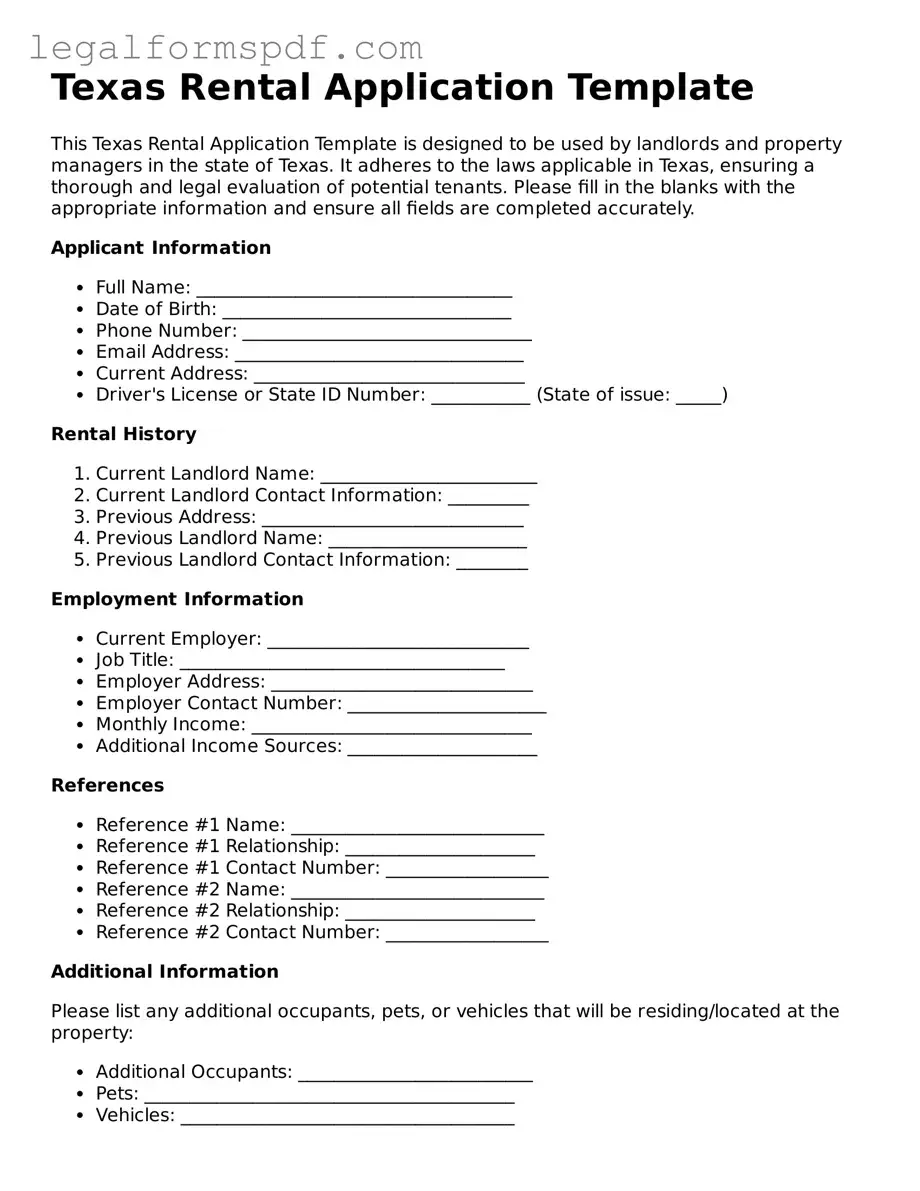A Lease Agreement is similar to the Texas Rental Application form because they are both fundamental documents in the rental process. While the application is the initial step, gathering information on potential renters, the lease agreement is the formal contract outlining the terms, conditions, rent amount, and duration of the rental. Both serve to protect the interests of the landlord and ensure that tenants understand their obligations.
A Residential Lease Application is another document that bears resemblance to the Texas Rental Application form. It is used specifically for residential properties, collecting prospective tenant details to assess their eligibility. Like the Texas version, it includes sections for personal information, rental history, employment details, and references, aiming to establish the reliability and financial stability of the applicant.
The Tenant Screening Form shares similarities with the Texas Rental Application form, as it is also designed to evaluate potential tenants. This form focuses on collecting data that can be used to conduct background checks, including criminal history, credit checks, and rental history. Its purpose is to minimize risk for the landlord by ensuring a prospective tenant is responsible and trustworthy.
A Co-Signer Agreement is somewhat similar to the Texas Rental Application form, in that it is also used in the context of securing rental arrangements. When a potential tenant might not meet the financial requirements on their own, this agreement involves a third party agreeing to take financial responsibility should the tenant fail to pay rent. It ties directly to the information collected in the application, which might indicate the need for such an agreement.
An Employment Verification Form has parallels to the Texas Rental Application form, as both seek to confirm the applicant's ability to afford the rent. The employment verification form is used to verify the employment status and income level of the applicant, which is critical information collected in the rental application to assess financial stability.
The Pet Agreement is related yet distinct from the Texas Rental Application form. Where the rental application might include a section asking whether the applicant has pets, the pet agreement is a detailed document outlining the terms under which pets are allowed on the property. This agreement covers pet deposits, types of allowable pets, and any rules specific to the accommodation of pets in the rental unit.
The Guarantor Form is closely related to the rental application. It’s required when a tenant may not have sufficient credit history or income to qualify on their own. This form is a contract where a guarantor agrees to assume financial responsibility for the lease if the tenant fails to make payments. It complements the rental application in ensuring financial security for the landlord.
The Property Management Agreement, while more relevant to property owners and managers, shares a connection with the Texas Rental Application form. It sets the terms under which property managers undertake the management of a property, including finding and screening tenants, which involves the use of rental application forms. Essentially, it lays the groundwork for the operational side of handling rental applications and agreements.
Lastly, the Move-In/Move-Out Checklist is complementary to the Texas Rental Application form, coming into play at the beginning and end of the lease term specified in the rental agreement. It's designed to document the condition of the property at both times to ensure that tenants are aware of and will be held accountable for any damages that occur during their tenancy. This checklist contributes to the overall process of managing a rental, starting with selecting the right tenant through the application process.
